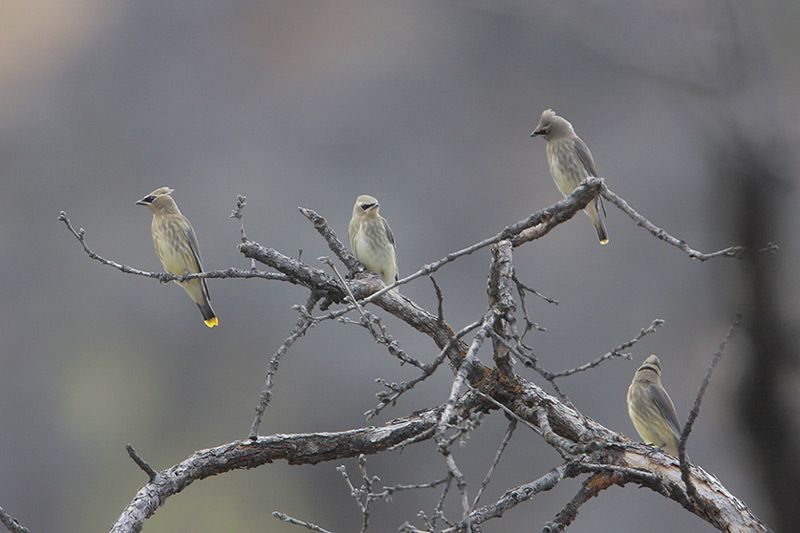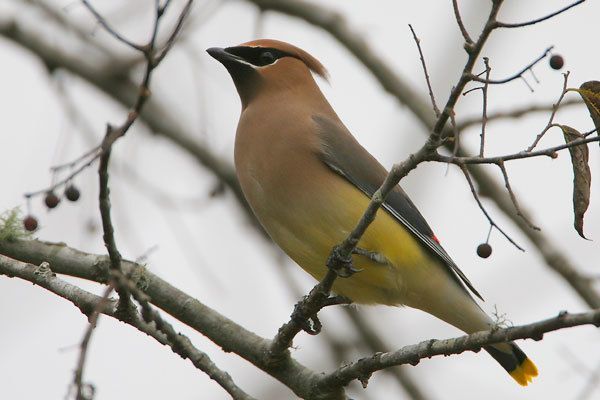Cedar Waxwing

© Joanne Kamo
Bombycilla cedrorum
Family: (Bombycillidae) Waxwings
Preferred Habitat: Woodlands and suburbs.
Seasonal Occurrence: Common winter and spring. Occasional in the fall.
Profile by Vicki Stittleburg: Cedar Waxwings are stunning birds; both males and females look alike. They have brown upperparts and a cinnamon crest. The belly is pale yellow and the tail is gray with a bright yellow band at the tip. The face has a Zorro-like mask neatly outlined in white. The name "waxwing" is derived from the bright red tips of their wings which look like they have been dipped in colored candle wax. The older the bird, the more showy the red tips.
Common in winter and spring, flocks of Cedar Waxwings will descend on any open woods and parks, rural or suburban, with a lot of berry-bearing shrubs. The Cedar Waxwing is one of the few North American birds that specializes in eating fruit. Since they eat so much fruit, Cedar Waxwings occasionally become intoxicated when they ingest overripe berries that have started to ferment. Planting mulberries, juniper or yaupon shrubs can attract this bird to your yard.
Cedar Waxwings call often, especially in flight. Listen for their high-pitched, trilling calls in woodlands and suburbs.
Profile: Flocks of Cedar Waxwings are welcome winter visitors to the Houston suburbs where they feast primarily on berries. The Cedar Waxwing is one of the few North American birds that specializes in eating fruit; their digestive system is especially adapted to rapidly digest berries and they can survive on fruit alone for several months. Favorite food sources include the berries of hollies, Cherry Laurel, Cedar and Privet. They are also known to relish the early spring buds of maples and elms. The name "waxwing" is derived from the waxy-looking red tips of their wings.
Cedar Waxwings are pale brown on the head and chest fading to soft gray on the wings. The belly is pale yellow, and the tail is gray with a bright yellow tip. The face has a narrow black mask neatly outlined in white. The red waxy tips to the wing feathers are not always easy to see. Males and females look alike.
The period between Christmas and February is a good time of the year to look for Cedar Waxwings in urban and suburban areas across Texas. They are almost always in flocks and are easy to recognize by the thin, high-pitched 'seeeeee' calls they make when in the tree tops and in flight.
-
Cornell Lab of Ornithology

© Greg Lavaty, www.texastargetbirds.com

© Greg Lavaty, www.texastargetbirds.com

© Greg Lavaty, www.texastargetbirds.com




















